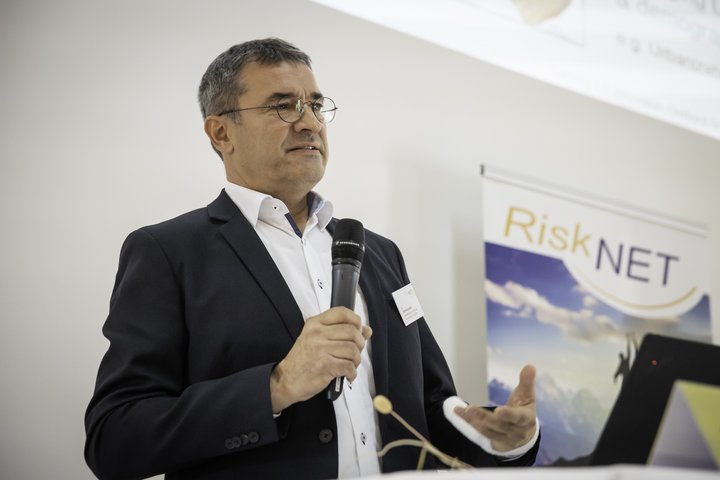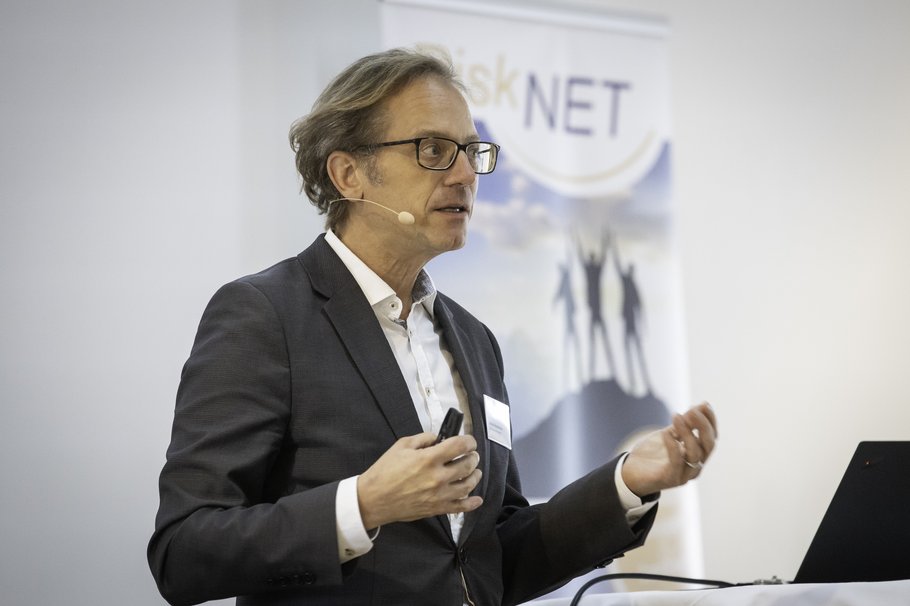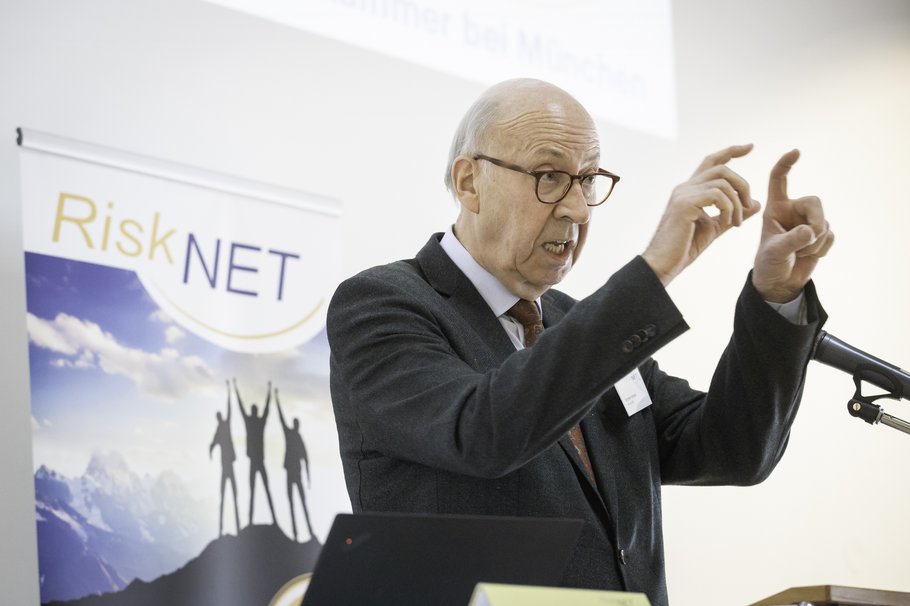What direction is mobility developing in? What cyber risks are lying in wait for companies? Are radical trends contributing to increasing division in society? What risks are caused by increasing protectionism and in respect of the banking and debt crisis? These are just a selection of issues on the risk map and the resulting questions that companies have to deal with these days.
As a result, early identification and management of risks is a major challenge, particularly for companies in the insurance sector. Ultimately, their business is to take a forward-looking view of possible risk events – correct insurance requires precise forecasts and planning. This is definitely the case at Munich RE, the world's largest reinsurer. How Munich Re looks at risks, what systems the companies uses and where new risks can occur (emerging risks) was illustrated by Dr. Gerhard Schmid at the RiskNET Summit. One thing is clear. Early identification of potential risks with high potential for uncertainty and taking appropriate action are essential for success.
Systematic risk identification
There is a good reason why Munich Re focuses its analyses on systematic and early identification of emerging risks. Gerhard Schmid defines emerging risks as new or changing risks with high potential for uncertainty in terms of their probability of occurrence and extent of loss. Schmid said: "Emerging risks can have significant impacts on insurance methods and capital investments." In addition, according to the Munich Re manager they are previously unknown or unidentified and affect a large number of people, objects or assets. However, the crux for Schmid is that conventional risk management techniques are difficult to apply to emerging risks. According to Schmid, five areas are responsible for the occurrence of these emerging risks, namely society and politics, the economic environment, the environment and technology.
AI and data analytics provide new tools
To systematically identify emerging risks, Munich RE uses a mix of manual processes, for example analysis of specialist articles from newspapers and journals and involvement of insurance associations and other insurance-related organisations in the process. They also utilise the expertise of universities, research institutions and industry experts, as well as their own employees and the company network. At the same time, Munich Re takes advantage of sources such as big data, data mining and semantic web analysis. The reinsurer also uses artificial intelligence (AI) and data analytics. In the company's own words: "Data analytics and artificial intelligence open up new opportunities for managing and insuring risks. Data experts from Munich Re [...] also use external, publicly accessible data, for example information relating to geography, buildings, weather or socio-economic data."
Trend radar for better risk navigation
Despite all the digital tools, Schmid believes that people are still the key in monitoring evaluations. He said: "Monitoring needs people with the requisite knowledge." At Munich Re, the evaluated data is incorporated into an annual "Emerging Risks Trend Radar". Schmid explains this trend radar using the example of the technology sector, where the fields of energy, transport, industry and IT are analysed. The risk assessment is carried out for three time periods – less than five years, five to ten years, and longer than ten years. Among the top risks for industry and in the IT sector in the next five years, the focus is on supply chain and also autonomous driving. With the trend radar, the reinsurer is deploying a tool that enables fundamen- tally better advance risk navigation.
Looking ahead at risk
When it comes to the future risk landscape, Munich RE is facing a large number of risks in the individual segments. In the field of technology, they include e-mobility, cyber risks due to digitalisation and autonomous weapons systems. In society, the key trends are the growing income gap and increasing division in society, while for the environment a loss of biodiversity and increased genetic engineering are central. Analysis also focuses on politics, for example geopolitical tension, terrorism and the decline of communities of states. According to Schmid, the same applies in the economic sphere, where new areas of risk could arise due to trade wars, banking and debt. Overall, there are many risks that have a direct or indirect dependency on one another. This is a crucial factor that does not exactly make it easier for risk managers to make predictions. Schmid said: "Global interdependencies, increasing complexity and rapid changes are having a massive impact on the risk landscape." Networking in particular – from globalisation of trade and the financial sector to changing communication technologies to increasing mobility of people – calls for a rethink and, above all, faster identification of potential risks. Unforeseen events are on the increase, in a geopolitical world with a rapidly changing risk landscape. And Munich RE is looking for the answers. This is no easy undertaking in a digital and closely networked world – where the emphasis everywhere is on getting faster, higher and further. Schmid sees this is a key challenge for risk management, especially in terms of new risks and possible responses to them.
Predicting risks more effectively with machine learning and analytics
"Is artificial intelligence the biggest threat to humanity?" and "AI can write entire texts – and amazingly good ones at that". Two reports in recent weeks that highlight the breadth of the discussion of artificial intelligence or AI. From threat scenarios to everyday benefits, facts are getting mixed up with half-truths, speculation and end-time forecasts. The truth is likely to lie somewhere in the middle. In other words, both horror stories and universal praise of AI are exaggerated views. It depends on exactly what is being discussed in the AI environment and what the actual objective of the relevant solution is.
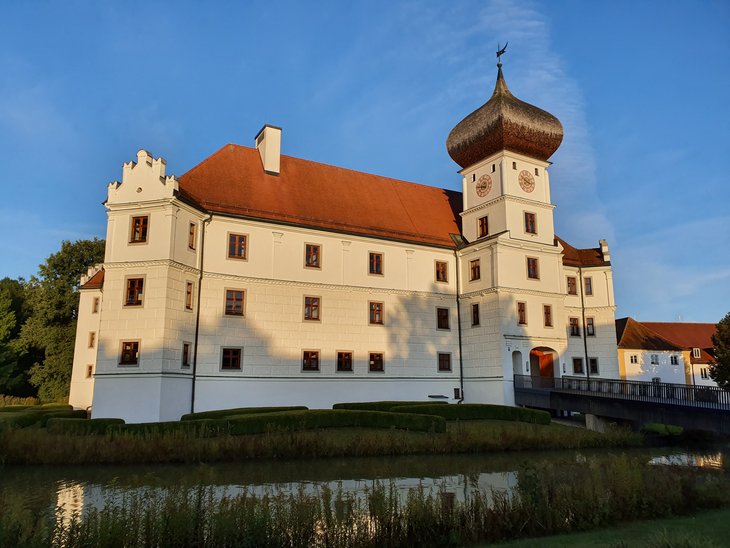 RiskNET Summit 2019 at Schloss Hohenkammer. A place full of history. According to legend, in the 8th Century there was a grand stone house at this site on the River Glonn – it was known as chamara. The name was derived from the Latin camera, meaning a room or chamber, which was translated as kamer in Middle-High German. The house was considered "noble" or "high", resulting in its modern name, meaning "high chamber".
RiskNET Summit 2019 at Schloss Hohenkammer. A place full of history. According to legend, in the 8th Century there was a grand stone house at this site on the River Glonn – it was known as chamara. The name was derived from the Latin camera, meaning a room or chamber, which was translated as kamer in Middle-High German. The house was considered "noble" or "high", resulting in its modern name, meaning "high chamber".
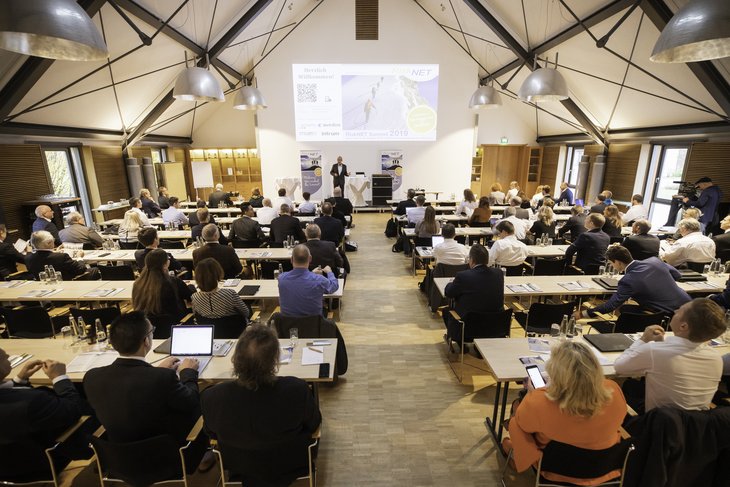 More than 100 delegates at the RiskNET Summit 2019 in Schloss Hohenkammer.
More than 100 delegates at the RiskNET Summit 2019 in Schloss Hohenkammer.
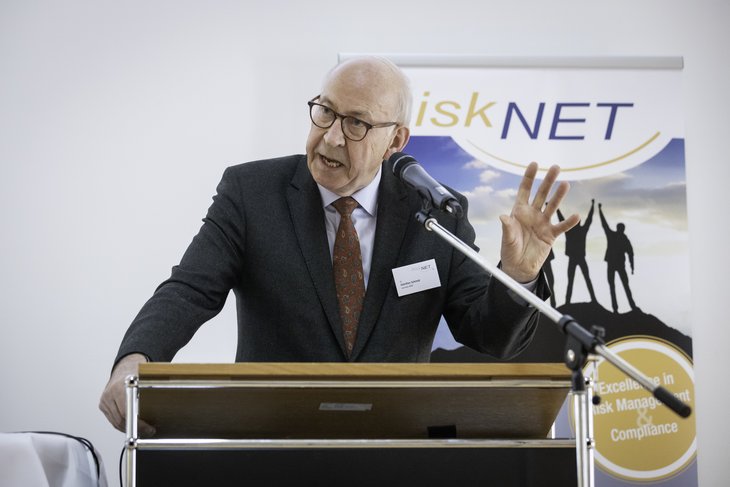 Em. Prof. Dr. Günther Schmid: Sees the geopolitical world in a state of disorder.
Em. Prof. Dr. Günther Schmid: Sees the geopolitical world in a state of disorder.
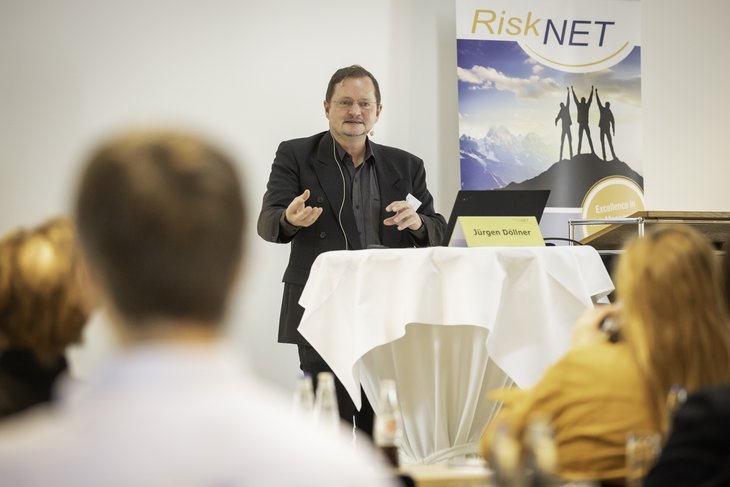 Prof. Jürgen Döllner from the Hasso-Plattner Institute spoke about the dream team of big data, machine learning and analytics.
Prof. Jürgen Döllner from the Hasso-Plattner Institute spoke about the dream team of big data, machine learning and analytics.
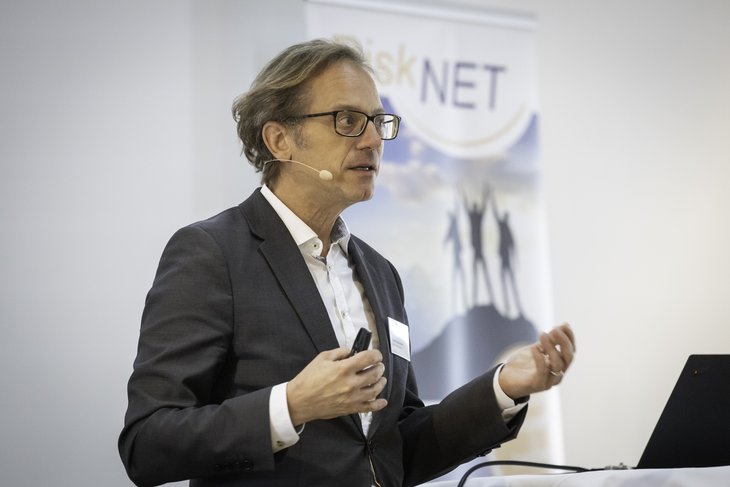 Dr. Jochen Felsenheimer from XAIA painted a pessimistic picture of systemic risks
Dr. Jochen Felsenheimer from XAIA painted a pessimistic picture of systemic risks
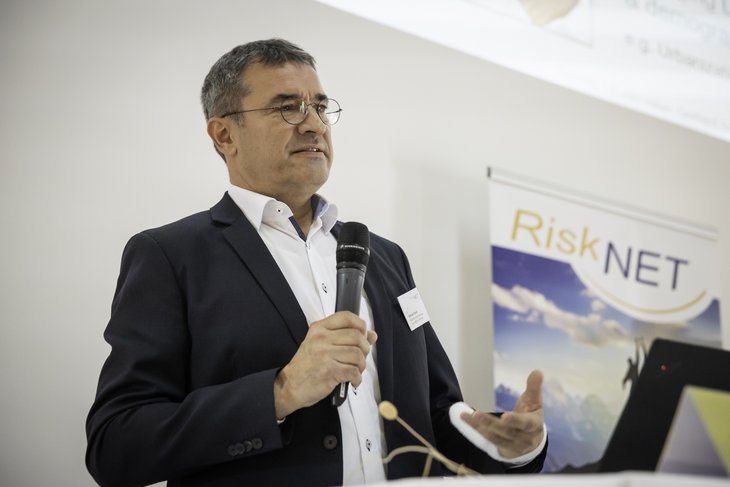 Dr. Gerhard Schmid: Data analytics and AI open up new opportunities for managing risks.
Dr. Gerhard Schmid: Data analytics and AI open up new opportunities for managing risks.
 Dr. Markus Krall: Artificial suppression of creative destruction generates a looming bow wave of bankruptcies due to the accumulation of zombie companies.
Dr. Markus Krall: Artificial suppression of creative destruction generates a looming bow wave of bankruptcies due to the accumulation of zombie companies.
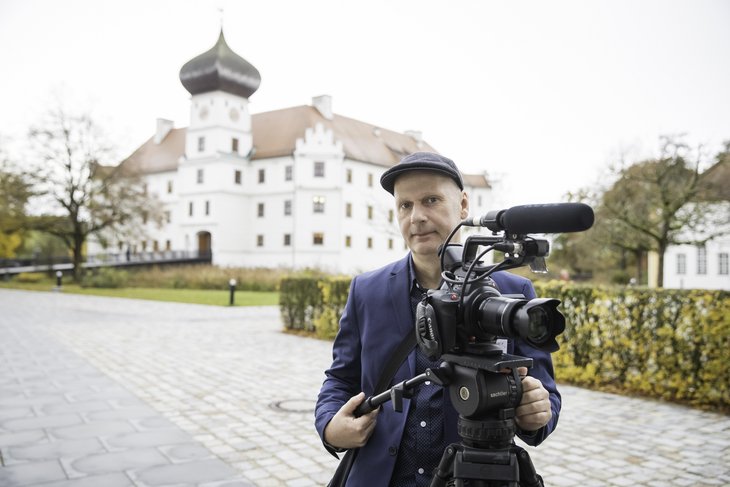 Video production for RiskNET media library.
Video production for RiskNET media library.
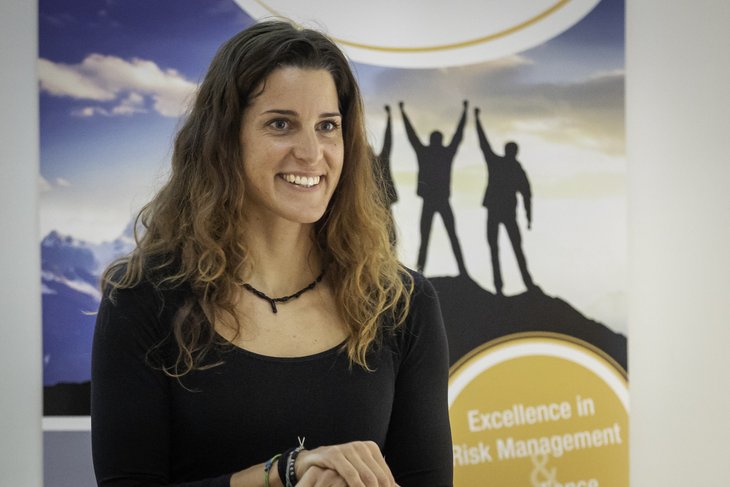 Extreme mountaineer Tamara Lunger performs a balancing act: Opportunity and risk on the world's highest mountains.
Extreme mountaineer Tamara Lunger performs a balancing act: Opportunity and risk on the world's highest mountains.
 Interaction instead of endless Powerpoint slides.
Interaction instead of endless Powerpoint slides.
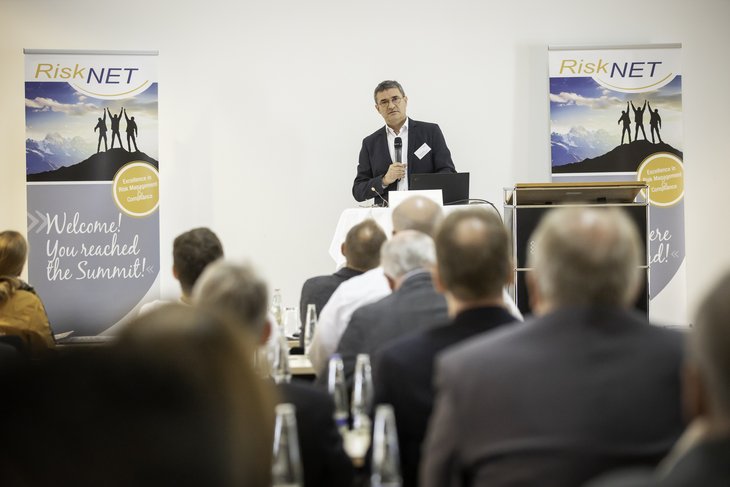 An exciting journey through the world of opportunities and risks.
An exciting journey through the world of opportunities and risks.
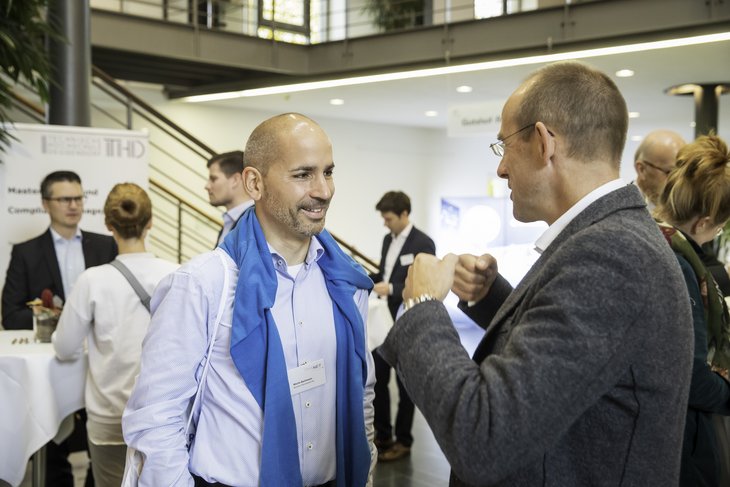 Moritz Bachmann from Novartis International in conversation with Frank Romeike.
Moritz Bachmann from Novartis International in conversation with Frank Romeike.
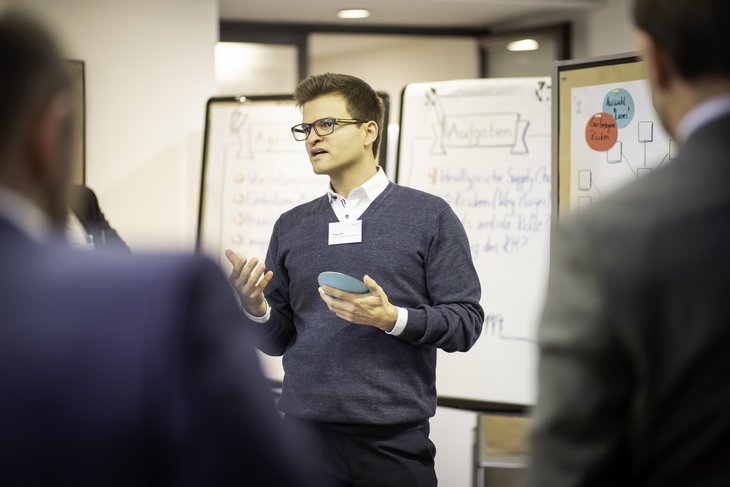 Dr. Holger Klier, Director of Enterprise Risk Management at the Magna Steyr Group, talks about "The Art of Managing Uncertainty".
Dr. Holger Klier, Director of Enterprise Risk Management at the Magna Steyr Group, talks about "The Art of Managing Uncertainty".
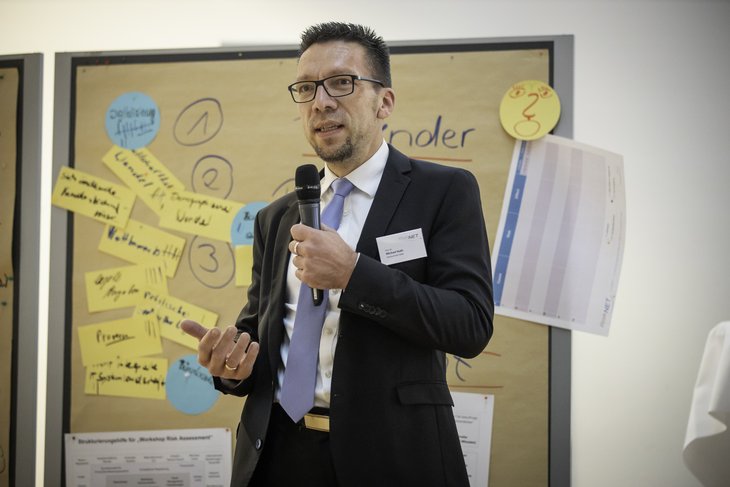 Prof. Michael Huth (University of Fulda) presents the results of the workshop on supply chain risk management.
Prof. Michael Huth (University of Fulda) presents the results of the workshop on supply chain risk management.
 Prof. Jürgen Döllner in our interview: "I see machine learning as the key as it can do more than people."
Prof. Jürgen Döllner in our interview: "I see machine learning as the key as it can do more than people."
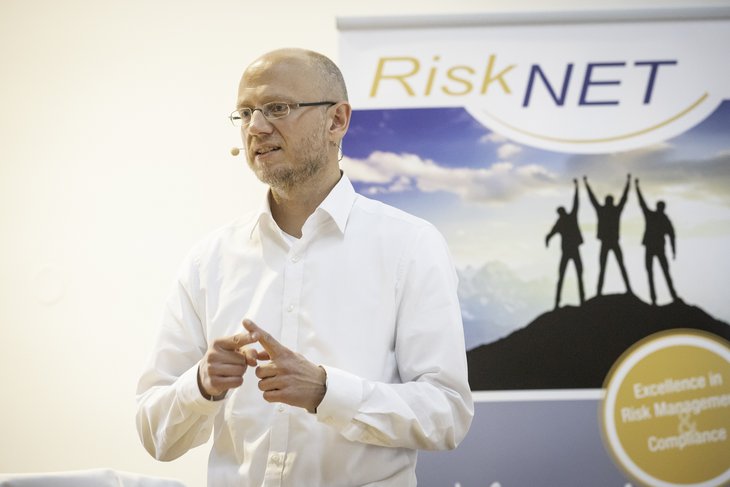 Jochen Derrer, Head of Enterprise Risk Management at the adidas Group, highlights a method of effectively linking risk management to corporate strategy.
Jochen Derrer, Head of Enterprise Risk Management at the adidas Group, highlights a method of effectively linking risk management to corporate strategy.
 Sabine Müller, Corporate Security at the BMW Group, outlined how using the correct methods can make risk management enjoyable.
Sabine Müller, Corporate Security at the BMW Group, outlined how using the correct methods can make risk management enjoyable.
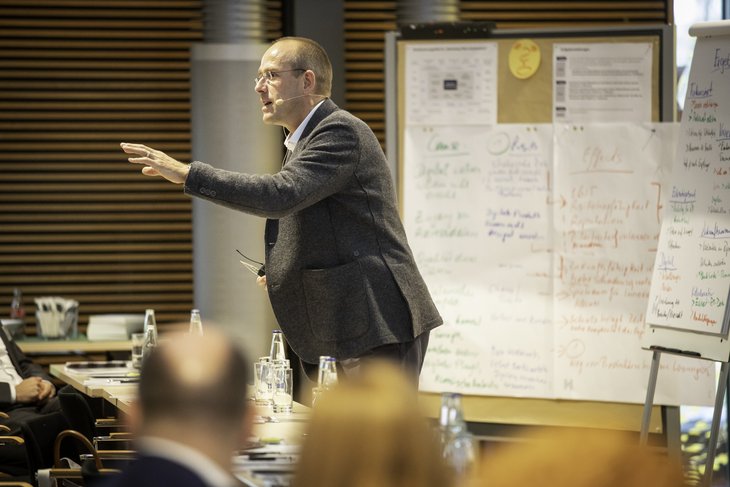 Frank Romeike built a bridge between the ancient and modern worlds and provided a number of ideas for the ongoing development of risk management. Odysseus teaches us about scenario thinking, enabling us to learn from the future.
Frank Romeike built a bridge between the ancient and modern worlds and provided a number of ideas for the ongoing development of risk management. Odysseus teaches us about scenario thinking, enabling us to learn from the future.
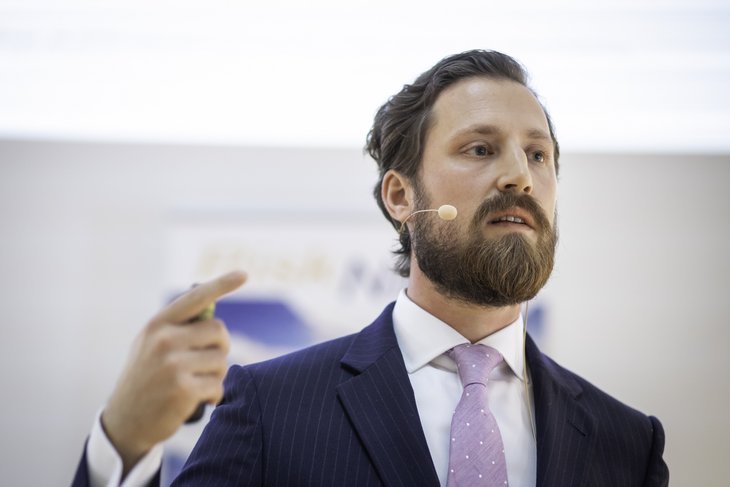 Dr. Sebastian Rick explains the compliance index model, a method of measuring the impact of compliance measures.
Dr. Sebastian Rick explains the compliance index model, a method of measuring the impact of compliance measures.
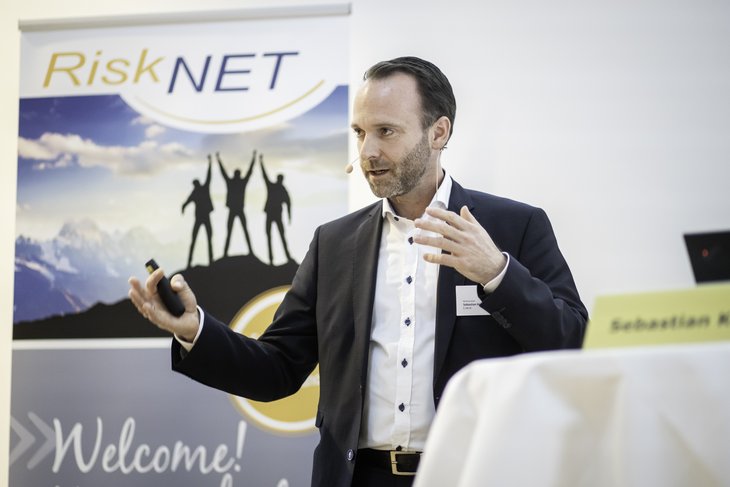 Sebastian Koch from EON on the topic: "Measuring – Weighing – Counting" in the compliance environment.
Sebastian Koch from EON on the topic: "Measuring – Weighing – Counting" in the compliance environment.


